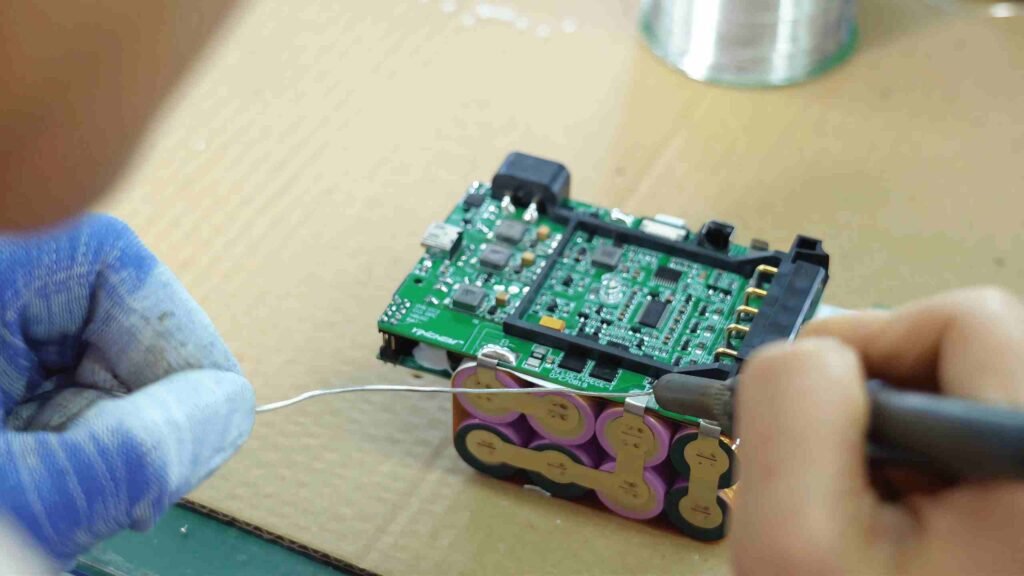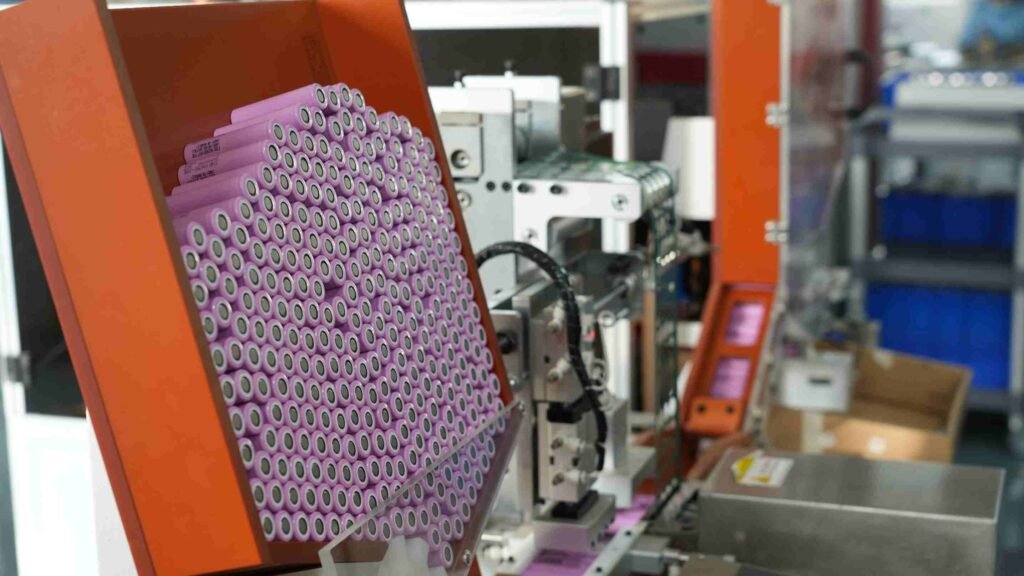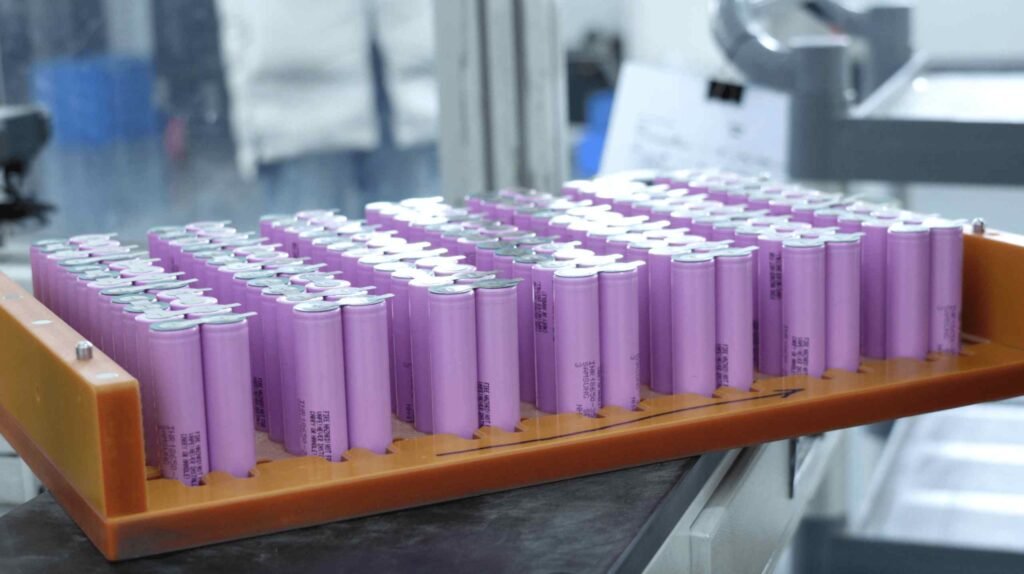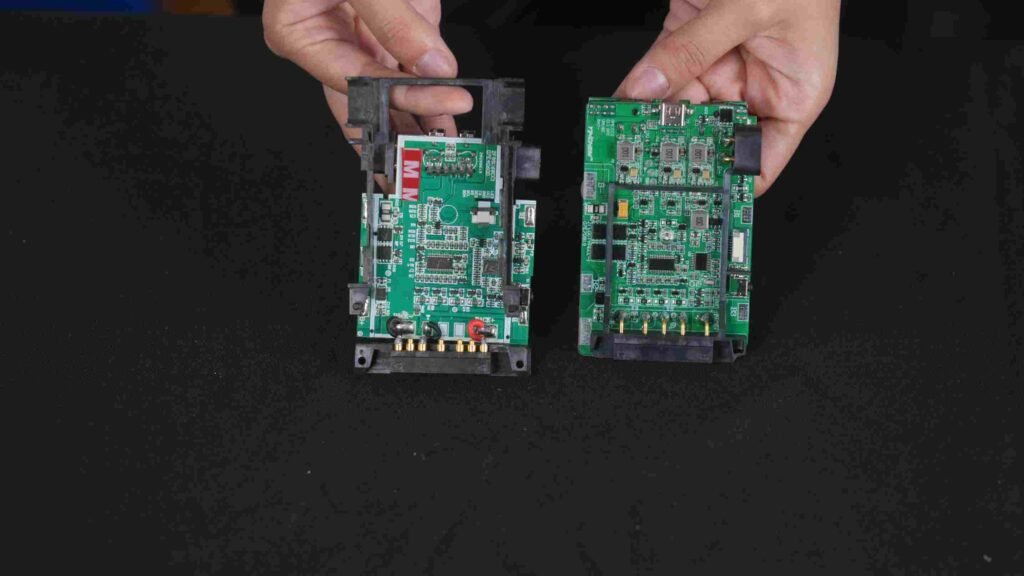We are a factory with 15 years of experience in lithium battery manufacturing. Now, let’s take a first-person perspective to see how a V-shaped battery is produced.

The process can be roughly divided into six steps, and this article covers the first half.
Step 1: Cell Sorting
Cells are sorted into different grades according to certain standards to meet the requirements of various products. This is a crucial step in the battery manufacturing process, requiring comprehensive consideration of factors such as cell performance, size, appearance, and consistency. By employing professional testing equipment and intelligent sorting methods, the performance and safety of the final battery pack can be ensured. Moreover, this approach can enhance battery quality and production yield to some extent while reducing the defect rate. Inconsistent cells can lead to accelerated degradation of individual cell performance during use, thereby causing premature failure of the lithium battery pack for various reasons.

What is consistency?
Consistency in lithium batteries refers to the uniformity of individual cells that will be assembled into a battery pack. This includes parameters such as capacity, voltage, internal resistance, current, etc. Any inconsistency directly affects the output of the battery pack.
Why achieve consistency ?
Achieving consistency is not only about maximizing the power, current, and available capacity of the battery pack but also about maintaining its lifespan. If there are significant differences in the consistency of the cells, the cells with greater differences not only burden the normal cells but also become weak points for the entire battery pack. At this point, overcharging, overdischarging, and heating issues may occur successively.
What are the dangers of inconsistency?
1.Decreased performance:
Inconsistency in cells can lead to imbalance during charging and discharging, such as some cells being overcharged or overdischarged, which can decrease the overall performance and lifespan of the battery pack.
2.Increased safety hazards:
Inconsistency in cells may cause certain cells to overheat, increasing safety risks.
3.Loss of battery capacity:
In a battery pack, the cell with the smallest capacity will determine the overall capacity of the battery pack, resulting in some capacity being underutilized.
4.Shortened battery lifespan:
The cell with the shortest lifespan will determine the overall lifespan of the battery pack, shortening the lifespan of the entire battery pack.
5.Increased internal resistance:
Different cells have different internal resistances, which may cause cells with higher internal resistance to generate more heat during charging and discharging, accelerating battery aging.
Therefore, to ensure the safety and performance of the battery, measures need to be taken to control and reduce the inconsistency between cells. In our Blade series batteries, we use first-tier brands such as Samsung and LG for 18650 cells. Compared to other brands, this choice can better guarantee the consistency of the cells to some extent
Step 2: Battery Pack Spot Welding
The individual cells are spot welded together to form groups, combining them into the required series and parallel configurations.

Spot welding is a highly precise operation that requires ensuring the stability of each weld point to prevent issues during subsequent use. The quality of spot welding directly impacts the performance and reliability of the final battery pack.
Firstly, spot welding must be strictly performed according to requirements. The position, welding time, and welding pressure of each cell must be accurately controlled to ensure the stability and reliability of the welds. Even a slight deviation in one spot can lead to instability or safety hazards in the battery pack, so adherence to standard operating procedures is essential. After completing the welding, we typically conduct selective inspections of the weld points within a group to ensure welding quality.
Therefore, as one of the key steps in the battery production process, spot welding has always been highly valued. It requires experienced operators and advanced equipment to ensure that each battery pack meets the highest quality standards.
Step 3: Welding Integrated Supports
In the past, we used supports similar to the one shown in the first image. However, over prolonged use, issues such as detachment often arose. Therefore, in this generation of batteries, we began using integrated supports.

Firstly, this ensures the stability and safety of the battery assembly. By firmly welding the support onto the protection plate, it effectively prevents displacement or loosening during use, thereby reducing potential risks during transportation, installation, and use.
Secondly, the welded support also provides structural support. It offers a sturdy support structure for the battery assembly, allowing the battery to remain stable in various environmental conditions. Even during high-speed movement, such as the bumps and vibrations in a moving vehicle, the stability of the integrated support plays a crucial role.
Moreover, compared to separate supports, integrated supports are more efficient. They reduce assembly steps and component count, thereby improving production efficiency and assembly speed. This integrated design not only simplifies the operation process on the production line but also reduces production costs, enhancing the overall efficiency of the production line.


